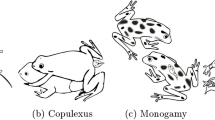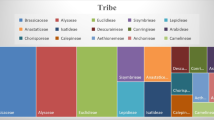Abstract
With present study, we confirm that the ventral structures on anterior and middle chaetigers of two species of Spio are special kind of intraepidermal multicellular glands. The general anatomy and coherence morphology of these ventral epidermal glands (VEGs) were 3D-reconstructed based on semithin section series. Specific anatomical characters were explored using electron microscopy, such as scanning electron microscopy for characterization of gland pores and transmission electron microscopy for investigation into cytoanatomical details. The VEGs are tubular or acinar; their pores are spherical or lens-shaped. The glands consist of three cell types: secretory cells, sheath cells and canal cells, forming and strengthening the short gland duct and the pore region. The secretory cells are tightly packed into a single-layered, curved glandular epithelium. Secretory cells are separated from each other by thin projections of interstitial sheath cells. The apices of the secretory and sheath cells surround a tubular or vase-shaped extracellular space, the reservoir. The reservoir is traversed by microvilli of the secretory and sheath cells. Two sorts of microvilli characterize the apex of secretory cells: slender, elongated ones located at the periphery (outer microvilli), and shorter but thicker ones, arranged in a distinct collar in the centre (inner microvilli). Secretion, encased in regular secretory granules and discharged only at the apex’ centre, is guided through the space enclosed by the collar of inner microvilli. Though also consisting of numerous cells, the VEGs of Spio spp. are not comparable to parapodial glands described in other spionid taxa since they remain in a strictly intraepidermal position, are distant from parapodia and contain sheath cells. Nonetheless, the VEGs are very helpful for taxonomic work on representatives of the genus Spio and closely related genera.







Similar content being viewed by others
References
Anctil M (1979) The epithelial luminescent system of Chaetopterus variopedatus. Can J Zool 57:1290–1310
Bick A (2005) A new polychaete genus and species of the Kongsfjorden, Spitsbergen, Svalbard. J Nat Hist 39:2987–2996
Bick A, Meißner K (2011) Redescription of four species of Spio and Microspio (Polychaeta, Spionidae) from the Kuril Islands and Peter the Great Bay, northwest Pacific. Zootaxa 2968:39–56
Clark AW (1965) Microtubules in some unicellular glands of two leeches. Cell Tissue Res 68:568–588
Dauer DM (2000) Functional morphology and feeding behavior of Spio setosa (Polychaeta: Spionidae). Bull Mar Sci 67:269–275
Defretin R (1971) The tubes of polychaete annelids. In: Florkin MH, Stolz H (eds) Extracellular and supporting structures. Comp Biochem 26C:713-747
Dorsett DA (1961) The behaviour of Polydora ciliata (Johnst.). Tube-building and burrowing. J Mar Biol Assoc UK 41:577–590
Dorsett DA, Hyde R (1970a) The spiral glands of Nereis. Cell Tissue Res 110:204–218
Dorsett DA, Hyde R (1970b) The epidermal glands of Nereis. Cell Tissue Res 110:219–230
Eibye-Jacobsen D, Vinther J (2012) Reconstructing the ancestral annelid. J Zool Syst Evol Res 50:85–87
Evenkamp H (1931) Morphologie, Histologie und Biologie der Sabellidenspecies Laonome kroyeri Malmgr. und Euchone papillosa M. Sars. Zool Jahrb (Abt Anat Ontog) 53:405–534
Gardiner SL (1992) Polychaeta: General organization, integument, musculature, coelom, and vascular system. In: Harrison FH (ed) Microscopic anatomy of invertebrates, vol 7., Annelida. Wiley-Liss, New York, pp 19–52
Gelder SR, Jennings JB (1975) The nervous system of the aberrant symbiotic polychaete Histriobdella homari and its implications for the taxonomic position of Histriobdellidae. Zool Anz 194:293–304
Gupta BL, Little C (1970) Studies on Pogonophora. 4. Fine structure of the cuticle and epidermis. Tissue & Cell 2:637–696
Hausen H (2005) Comparative structure of the epidermis in polychaetes (Annelida). In: Bartolomaeus T, Purschke G (eds) Morphology, molecules, evolution and phylogeny in Polychaeta and related taxa. Hydrobiologia 535/536:25–35
Hausmann K (1982) Electron microscopical studies on Anaitides mucosa (Annelida, Polychaeta). Cuticle and cilia, mucous cells and mucous extrusion. Helgoland Mar Res 35:79–96
Hirokawa N, Keller TCS III, Chasan R, Mooseker MS (1983) Mechanism of brush border contractility studied by the quick-freeze, deep-etch method. J Cell Biol 96:1325–1336
Karnovsky MJ (1965) A formaldehyde-glutaraldehyde fixative of high osmolality for use in electron microscopy. J Cell Biol 27:137–138
Kryvi H (1971) Histology and biochemistry of the mucous glands of Sabella penicillium L. (Annelida, Polychaeta). Nor J Zool (Zool Scr) 19:37–44
Kryvi H (1972) The fine structure of the ventral mucous cells of Sabella penicillum (Polychaeta). Sarsia 48:23–32
Maciolek NJ (1990) A redescription of some species belonging to the genera Spio and Microspio (Polychaeta: Annelida) and descriptions of three new species from the northwestern Atlantic Ocean. J Nat Hist 24:1109–1141
Mastrodonato M, Lepore E, Gherardi M, Zizza S, Sciscioli M, Ferri D (2005) Histochemical and ultrastructural analysis of the epidermal gland cells of Branchiomma luctuosum (Polychaeta, Sabellidae). Inv Biol 124:303–309
Mastrodonato M, Gherardi M, Todisco G, Sciscioli M, Lepore E (2006) The epidermis of Timarete filigera (Polychaeta, Cirratulidae): histochemical and ultrastructural analysis of the gland cells. Tissue Cell 38:279–284
Matsudaira PT, Burgess DR (1985) Structure and function of the brush-border cytoskeleton. Cold Spring Harb Symp Quant Biol 46:845–854
Meißner K (2005) Revision of the genus Spiophanes (Polychaeta: Spionidae); with new synonymies, new records and descriptions of new species. Mitt Mus Naturk Berlin, Zool Reihe 81:3–66
Meißner K, Hutchings P (2003) Spiophanes species (Polychaeta: Spionidae) from Eastern Australia—with descriptions of new species, new records and an emended generic diagnosis. Rec Aus Mus 55:117–140
Meißner K, Bick A, Bastrop R (2011) On the identity of Spio filicornis (O.F. Müller, 1776)—with the designation of a neotype, and the description of two new species from the North East Atlantic Ocean based on morphological and genetic studies. Zootaxa 2815:1–27
Meißner K, Bick A, Müller CHG (2012) Parapodial glandular organs in Spiophanes (Polychaeta: Spionidae)—studies on their functional anatomy and ultrastructure. J Morphol 273:291–311
Meißner K, Bick A, Guggolz T, Götting M (2014) Spionidae (Polychaeta: Canalipalpata: Spionida) from seamounts in the Northeast Atlantic. Zootaxa 3786:201–245
Michel C, DeVillez EJ (1980) Cuticle and mucous glands in the oesophagus of an annelid (Nereis virens). Tissue & Cell 12:673–683
Moermans R (1974) Recherches sur l’histochimie des teguments et du tube d’une annelide polychète (Eunicidae): Hyalinoecia tubicola (O.F. Müller). Bull Biol Fr Bel 108:41–59
Mooseker MS (1976) Brush border motility: microvillar contraction in Triton-treated brush borders isolated from intestinal epithelium. J Cell Biol 71:417–433
Müller CHG, Hylleberg J, Michalik P (2014) Complex epidermal organs of Phascolion (Sipunculida): insights into the evolution of bimodal secretory cells in annelids. Acta Zool. doi:10.1111/azo.12082
Neff JM (1967) Calcium carbonate tube formation by serpulid polychaete worms: Physiology and ultrastructure. Ph.D. Thesis, Duke University, 305 p
Neff JM (1971) Ultrastructure of calcium phosphate-containing cells in the serpulid polychaete worm Pomatoceros caeruleus. Cell Tissue Res 7:191–200
Pflugfelder O (1934) Spinndrüsen und Excretionsorgane der Polyodontidae. Z wiss Zool 145:351–365
Richards KS (1977) Structure and function in the oligochaete epidermis (Annelida). In: Sperman RIC (ed) Comparative biology of skin. Symp Zool Soc London 39:171-193
Richards KS (1978) Epidermis and cuticle (chapter 2). In: Mill PJ (ed) Physiology of annelids. Academic Press, London, pp 33–61
Richardson KC, Jarett L, Finke EH (1960) Embedding in epoxy resins for ultrathin sectioning in electron microscopy. Stain Technol 35:313–323
Rouse GW, Pleijel F (2001) Polychaetes. Oxford University Press, Oxford
Shillito B, Lechaire J-P, Gaill F (1993) Microvilli-like structures secreting chitin crystallites. J Struct Biol 111:59–67
Shillito B, Lübbering B, Lechaire J-P, Childress JJ, Gaill F (1995) Chitin localization in the tube secretion system of a repressurized deep-sea tube worm. J Struct Biol 114:67–75
Southward EC (1984) Pogonophora (chapter 17). VI. Annelid-related phyla and cuticle evolution. In: Bereiter-Hahn J, Matoltsy AG, Richards KS (eds) Biology of the integument. 1. Invertebrates. Springer, Berlin, pp 376–388
Southward EC, Schulze A, Gardiner SL (2005) Pogonophora (Annelida): form and function. In: Bartolomaeus T, Purschke G (eds) Morphology, molecules, evolution and phylogeny in Polychaeta and related taxa. Hydrobiologia 535/536:227–251
Sperling EA, Vinther J, Moy VN, Wheeler BM, Sémon M, Briggs DEG, Peterson KJ (2009) MicroRNAs resolve an apparent conflict between annelid systematic and their fossil record. Proc R Soc B 276:4315–4322
Storch V (1988) I. Integument. In: Westheide W, Hermans CO (eds) The ultrastructure of polychaeta. Microfauna Marina 4. Gustav Fischer-Verlag, Stuttgart, pp 13–36
Storch V, Welsch U (1972) The ultrastructure of epidermal mucous cells in marine invertebrates (Nemertini, Polychaeta, Prosobranchia, Opisthobranchia). Mar Biol 13:167–175
Struck TH (2011) Direction of evolution within Annelida and the definition of Pleistoannelida. J Zool Syst Evol Res 49:340–345
Struck TH, Purschke G, Dordel J, Hösel C, Nesnidal MP, Diersing F, Bleidorn C, Paul C, Hill N, Tiedemann R, Selbig J, Hartmann S (2014) Phylogeny and evolution of Annelida based on molecular data (chapter 9). In: Wägele JW, Bartolomaeus T (eds) Deep metazoan phylogeny: the backbone of the tree of live. New insights from analyses of molecules, morphology, and theory of data analysis. de Gruyter, Berlin, pp 143–160
Thomas JG (1940) XXXIII. Pomatoceros, Sabella and Amphitrite. L.M.B.C. Mem Typ Br Pla Anim 33:1–89
Truchet M, Vovelle J (1977) Etude de la glande cémentaire d’un Polychète tubicole (Pectinaria (=Lagis) koreni) à l’aide de la microsonde électronique, du microanalyseur ionique et du microscope électronique à balayage. Calcified Tiss Res 24:231–238
Vodopyanov S, Tzetlin A, Zhadan A (2014) The fine structure of epidermal papillae of Travisia forbesii (Annelida). Zoomorphology 133:7–19
Vovelle J (1956) Processus glandulaires impliqués dans la réconstitution du tube chez Pomatoceros triqueter L. Annelide Polychète (Serpulidae). Bull Lab Marit Dinard 42:10–32
Vovelle J (1979) Les glandes cémentaires de Petta pusilla Malmgren, polychète tubicole Amphictenidae, et sur sécrétion organo-minérale. Arch Zool Exp Gén 120:219–246
Vovelle J, Gaill F (1986) Données morphologiques, histochimiques et microanalytiques sur l’élaboration du tube organominéral d’Alvinella pompejana, Polychète des sources hydrothermales, et leurs implications phylogénétiques. Zool Scr 15:33–43
Vovelle J, Rusaouen-Innocent M, Grasset M, Truchet M (1994) Halogenation and quinone-tanning of the organic tube components of some Sabellidae (Annelida Polychaeta). Cah Biol Mar 35:441–459
Wang CS, Svendsen KK, Stewart RJ (2010) Morphology of the adhesive system in the sandcastle worm, Phragmatopona californica. In: von Byern J, Grunwald I (eds) Biological adhesive systems. From nature to technical and medical application. Springer, Vienna, pp 169–179
Welsch U, Storch V, Richards S (1984) V. Annelida. Epidermal cells (chapter 17). VI. Annelid-related phyla and cuticle evolution. In: Bereiter-Hahn J, Matoltsy AG, Richards KS (eds) Biology of the integument. 1. Invertebrates. Springer, Berlin, pp 269–296
Acknowledgments
Our electron microscopic studies were supported by Prof. Gabriele Uhl from University of Greifswald and PD Dr. Markus Franck and his technician team from the Electron Microscopic Centre of the University of Rostock (Germany). We are grateful for their permission to use their microtomes and transmission electron microscopes. CHGM moreover thanks Prof. Dr. Steffen Harzsch (University of Greifswald, Germany) for having funded standard EM laboratory equipment. We are grateful to Kerstin Schwandt (Rostock University), who did the laboratory work for histological studies, and to Katharina Huckstorf (Rostock University) for giving an introduction into IMARIS software. Sampling permissions were kindly provided by Sra. Margarita Mercadal Camps, chief executive officer of the Direcció General de Medi Rural i Mari (Govern de les Illes Balears, Palma de Mallorca, Spain). We thank two anonymous reviewers for their valuable comments that helped to improve quality of present manuscript.
Conflict of interest
The authors declare that they have no conflict of interest.
Ethical standard
All applicable international, national and/or institutional guidelines for the care and use of animals were followed. This article does not contain any studies with human participants performed by any of the authors. Informed consent was obtained from all individual participants included in the study.
Author information
Authors and Affiliations
Corresponding author
Additional information
Communicated by A. Schmidt-Rhaesa.
Rights and permissions
About this article
Cite this article
Rößger, A., Meißner, K., Bick, A. et al. Histological and ultrastructural reconstruction of ventral epidermal glands of Spio (Polychaeta, Spionidae, Annelida). Zoomorphology 134, 367–382 (2015). https://doi.org/10.1007/s00435-015-0264-9
Received:
Revised:
Accepted:
Published:
Issue Date:
DOI: https://doi.org/10.1007/s00435-015-0264-9




